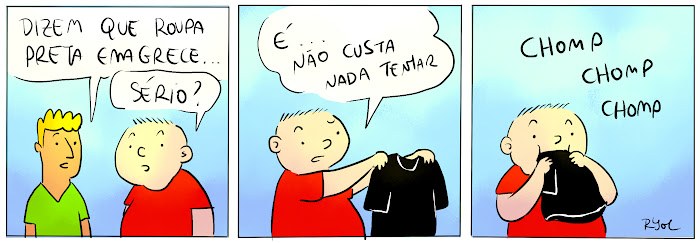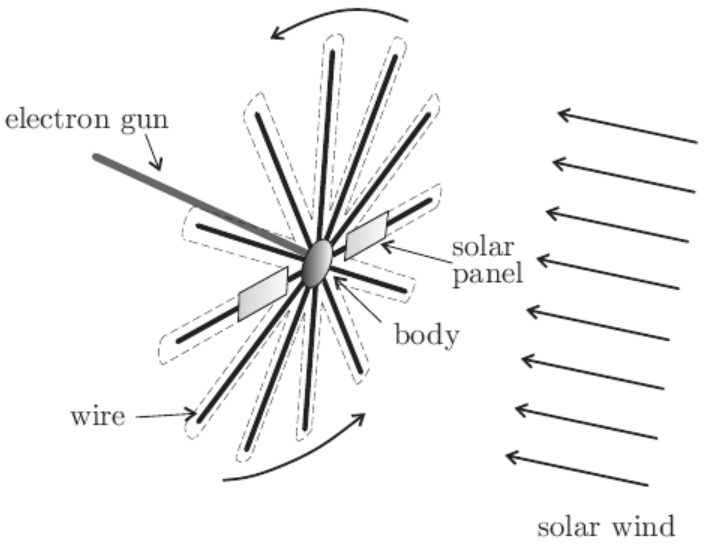
Isso mesmo, um post só com escadas. Fenomenal, né?
Só aqui no Haznos.
Só aqui!






























Isso mesmo, um post só com escadas. Fenomenal, né?
Só aqui no Haznos.
Só aqui!





























Muito bem amigos
eis que minhas férias chegaram
ficarei um mês fora e quando eu voltar muita coisa legal vai rolar
o ryotiras vai ter algumas reformulações (pra vocês terem idéia to pensando em até mudar o banner do cabeçalho, considerando que eu não mudo isso desde mil novecentos, é uma grande mudança)
muitos novos projetos (pelo menos 3)
e enfim, 2013 vai ser daoríssimo
enquanto isso não vos deixarei abandonados completamente
posto aqui agora tiras do ano passado (nota-se que eu tava bem cansando) que ainda não publiquei aqui:



o RYOTGOMBA continua com postagens
o RRRYOT tá com ilustrações diárias programadas para serem postadas até eu voltar
e vos disponibilizo para download o fanzine MANUAL DA AUTO-DESTRUIÇÃO que fiz
ano passado
(não confundir com o “CTFTREQTD”)

abraços e até logo

Artist’s impression of an electric solar wind sail (credit: Alexandre Szames)
The Electronics Research Laboratory at the University of Helsinki has successfully constructed a 1-km-long electric sail (ESAIL), which would interact with the solar wind (charged particles from the sun) to produce long-distance propulsion power for a spacecraft.
Using ultrasonic welding, the feat proves that manufacturing full-size ESAIL tethers is possible. Experts previously considered it impossible to weld together such thin wires.
Invented by Dr. Pekka Janhunen at the Finnish Kumpula Space Centre in 2006, the ESAIL consists of long, thin (25–50 micron) electrically conductive tethers manufactured from aluminum wires. A full-scale sail can include up to 100 tethers, each 20 kilometers long.
How it works

Electric sail concept (credit: Electronics Research Laboratory)
The electric field of the charged tethers will extend approximately 100 meters into the surrounding solar wind plasma. Charged particles from the solar wind crash into this field, creating an interaction that transfers momentum from the solar wind to the spacecraft.
In addition, the craft will contain a high-voltage source and an electron gun that creates a positive charge in the tethers.
Compared with other methods, such as ion engines, the electric sail produces a large amount of propulsion considering its mass and power requirement. Since the sail consumes no propellant, it has, in principle, unlimited operating time.
The deployed tethers are kept straight in space by a centrifugal force of five grams in a full-scale electric sail.
According to the Electronics Research Laboratory, a 1000 kg spacecraft with 100 electric-sail wires, each 20-km long, could produce acceleration of about 1 mm per square second. After acting for one year, this acceleration would produce a final speed of 30 km/s (67108 miles per hour), and would continue to acccelerate.
Note that the ESAIL has nothing in common (aside from the Sun as a power source) with the traditional solar light sail, which is propelled by photons.

Precision mechanical device with electronic control producing the ESAIL wire (credit: Timo Rauhala)
How it’s made
A single metal wire is not suitable as an ESAIL tether because micrometeoroids present everywhere in space would soon cut it. So the tether must be manufactured from several wires in parallel, joined together every centimeter; which will allow micrometeoroids to only cut individual wires without breaking the entire tether.
The wire is produced with a fully automated, precision mechanical device under computer control, developed and constructed by the team. The device at the Kumpula Science Campus in Helsinki is integrated into a modified commercial ultrasonic welding device.
Space testing
The theoretically predicted electric sail force has not yet been experimentally measured, but it will be tested on the ESTCube-1 satellite, an Estonian small satellite to be launched in March 2013. ESTCube-1 will deploy a 15-meter-long tether in space and measure the force it is subjected to.
The Aalto-1 nanosatellite from Aalto University, to be launched in 2014, will deploy a 100-meter-long tether.
The EU funding contribution to the ESAIL project is 1.7 million euros.
Applications
According to Wikipedia:
Graham Linehan, criador da série, divulgou em seu Twitter que pretende realizar um episódio especial de IT Crowd em 2013. Os ingleses normalmente são muito cruéis e descontinuam séries incríveis assim mesmo, do nada. Um dia eles acordam e decidem que não vão mais ir para o trabalho. IT Crowd é uma das melhores sitcoms da HISTÓRIA DA TELEVISÃO, e a gente não vê um episódio inédito da série desde julho de 2010.
Pra quem anda com saudades do elenco: Chris O’Dowd (Roy) está envolvido em vários filmes de comédia pastelão nos EUA e em uma série da Irlanda. Atualmente ele está no seriado Girls da HBO e estrelará outra comédia da HBO chamada Family Tree, ainda esse ano. Richard Ayoade (Moss) é um exelente diretor: dirigiu o episódio Critical Film Studies de Community e um dos meus filmes preferidos: Submarine. Katherine Parkinson (Jen): anda sumida. Foi vista pela última vez interpretando uma personagem bizarra no último episódio da 2ª temporada de Sherlock.
Eu quero muito IT Crowd de volta e estou muito empolgada com essa possível produção de um episódio extra. Please, Channel 4, please! Enquanto a gente espera, um vídeo com os melhores momentos da série:

Fire from a burning building being sucked into a tornado.
wh
get out of there fireman what are you doing
there’s a tornado
I can’t stop laughing at this fireman
he’s just standing there going
“well darn, look at that.
fire tornado.
huh.”
Via/Follow The Absolute Greatest Posts…ever.
Essa semana acontece a CES evento que reúne os grandes lançamento tecnológicos que estarão disponíveis para o consumidor em breve. Já vimos que a Nvidia lançou o seu vídeo game portátil ontem neste mesmo evento.
Hoje a Samsung resolveu divulgar a maior TV com Ultra-definição que existe. A ultra definição é duas vezes maior que a definição Full HD que conhecemos hoje, a 1080p e possui quatro vezes mais pixels também. Uma imagem Ultra HD tem 3840×2160 o equivalente a 8.3 megapixels. Esse formato é conhecido com 4K UHD.
Essa não é a primeira TV com a resolução 4K mas é a maior que existe com 85 polegadas, apenas uma polegada a mais que a antiga maior TV 4K do mundo. A empresa não revelou quanto a TV vai custar mas prometeu que as vendas começam em março nos EUA.
O grande problema das TV 4K é a falta de conteúdo, assim como acontece com a maioria das nova tecnologias, mas isso é algo que deve ser resolvido rápido, vale lembrar que O Hobbit já foi filmado neste formato.
Via CNET
![]() Mau tem pouca sala para muita TV
Mau tem pouca sala para muita TV
.
Submitted by: madeyoulol
Posted at: 2013-01-08 03:09:25
See full post and comment: http://9gag.com/gag/6278298

A new technique developed at MIT can edit DNA in precise locations (credit: Christine Daniloff/iMol)
Researchers at MIT, the Broad Institute and Rockefeller University have developed a new technique for precisely altering the genomes of living cells by adding or deleting genes.
The researchers say the technology could offer an easy-to-use, less-expensive way to engineer organisms that produce biofuels; to design animal models to study human disease; and to develop new therapies, among other potential applications.
To create their new genome-editing technique, the researchers modified a set of bacterial proteins that normally defend against viral invaders. Using this system, scientists can alter several genome sites simultaneously and can achieve much greater control over where new genes are inserted, says Feng Zhang, an assistant professor of brain and cognitive sciences at MIT and leader of the research team.
“Anything that requires engineering of an organism to put in new genes or to modify what’s in the genome will be able to benefit from this,” says Zhang, who is a core member of the Broad Institute and MIT’s McGovern Institute for Brain Research.
Early efforts
The first genetically altered mice were created in the 1980s by adding small pieces of DNA to mouse embryonic cells. This method is now widely used to create transgenic mice for the study of human disease, but, because it inserts DNA randomly in the genome, researchers can’t target the newly delivered genes to replace existing ones.
In recent years, scientists have sought more precise ways to edit the genome. One such method, known as homologous recombination, involves delivering a piece of DNA that includes the gene of interest flanked by sequences that match the genome region where the gene is to be inserted. However, this technique’s success rate is very low because the natural recombination process is rare in normal cells.
More recently, biologists discovered that they could improve the efficiency of this process by adding enzymes called nucleases, which can cut DNA. Zinc fingers are commonly used to deliver the nuclease to a specific location, but zinc finger arrays can’t target every possible sequence of DNA, limiting their usefulness. Furthermore, assembling the proteins is a labor-intensive and expensive process.
Complexes known as transcription activator-like effector nucleases (TALENs) can also cut the genome in specific locations, but these complexes can also be expensive and difficult to assemble.
Precise targeting
The new system is much more user-friendly, Zhang says. Making use of naturally occurring bacterial protein-RNA systems that recognize and snip viral DNA, the researchers can create DNA-editing complexes that include a nuclease called Cas9 bound to short RNA sequences. These sequences are designed to target specific locations in the genome; when they encounter a match, Cas9 cuts the DNA.
This approach can be used either to disrupt the function of a gene or to replace it with a new one. To replace the gene, the researchers must also add a DNA template for the new gene, which would be copied into the genome after the DNA is cut.
Each of the RNA segments can target a different sequence. “That’s the beauty of this — you can easily program a nuclease to target one or more positions in the genome,” Zhang says.
The method is also very precise — if there is a single base-pair difference between the RNA targeting sequence and the genome sequence, Cas9 is not activated. This is not the case for zinc fingers or TALEN. The new system also appears to be more efficient than TALEN, and much less expensive.
The new system “is a significant advancement in the field of genome editing and, in its first iteration, already appears comparable in efficiency to what zinc finger nucleases and TALENs have to offer,” says Aron Geurts, an associate professor of physiology at the Medical College of Wisconsin. “Deciphering the ever-increasing data emerging on genetic variation as it relates to human health and disease will require this type of scalable and precise genome editing in model systems.”
The research team has deposited the necessary genetic components with a nonprofit called Addgene, making the components widely available to other researchers who want to use the system. The researchers have also created a website with tips and tools for using this new technique.
Engineering new therapies
Among other possible applications, this system could be used to design new therapies for diseases such as Huntington’s disease, which appears to be caused by a single abnormal gene. Clinical trials that use zinc finger nucleases to disable genes are now under way, and the new technology could offer a more efficient alternative.
The system might also be useful for treating HIV by removing patients’ lymphocytes and mutating the CCR5 receptor, through which the virus enters cells. After being put back in the patient, such cells would resist infection.
This approach could also make it easier to study human disease by inducing specific mutations in human stem cells. “Using this genome editing system, you can very systematically put in individual mutations and differentiate the stem cells into neurons or cardiomyocytes and see how the mutations alter the biology of the cells,” Zhang says.
In the Science study, the researchers tested the system in cells grown in the lab, but they plan to apply the new technology to study brain function and diseases.
The research was funded by the National Institute of Mental Health; the W.M. Keck Foundation; the McKnight Foundation; the Bill & Melinda Gates Foundation; the Damon Runyon Cancer Research Foundation; the Searle Scholars Program; and philanthropic support from MIT alumni Mike Boylan and Bob Metcalfe, as well as the newscaster Jane Pauley.
Submitted by: icanrelate
Posted at: 2013-01-08 09:34:24
See full post and comment: http://9gag.com/gag/6279757
 Making a great cup of tea isn't as difficult as you might think. The graphic above from the folks at Utility Journal shows you exactly how long you should steep each type of tea, and what the temperature of the water you use to make the tea should be. More »
Making a great cup of tea isn't as difficult as you might think. The graphic above from the folks at Utility Journal shows you exactly how long you should steep each type of tea, and what the temperature of the water you use to make the tea should be. More » Se você assina o Netflix, talvez mais de uma pessoa use o seu login: alguém da família, ou alguém que divida a casa como você, ou um amigo seu. O Netflix sabe disse e quer separar as preferências de cada pessoa usando perfis.
O GigaOm conseguiu várias fotos dos novos perfis personalizados do Netflix, que dividem as preferências e hábitos das pessoas que usam a mesma conta.
Dessa forma, um pai não será inundados com filmes da saga Crepúsculo que a filha viu, por exemplo. O visual é mais ou menos como você esperaria, mas as imagens de perfil são rostos de desenho animado bastante genéricos.
O GigaOm lembra que esta é uma versão de teste, ou seja, pode mudar bastante até ser lançada. Além disso, o teste deve durar até seis meses, e o Netflix vai verificar se isso aumentou o uso do serviço. Se sim, a função chegará a todos; senão, não.
Confira todas as imagens no link a seguir: [GigaOm]


“Get away from her, you bitch-san”
Uma das melhores cenas de Aliens é quando o bicho malvado está prestes a barbarizar a Newt, quando é impedida pela Tenente Ripley, talvez o único ser realmente macho E inteligente de toda a tripulação da Sulaco. Ripley veste a Powerloader, uma empilhadeira-mecha-exoesqueleto usada para transporte de cargas.
Ela parte para chutar bundas e dá uma surra de responsa no Alien.
A idéia de uma empilhadeira naquele formato era boa demais para ficar no papel (ou celulóide), mas os requisitos tecnológicos são bem complexos. Pra começar toda a parte de equilíbrio precisa ser projetada, levando em conta que o sujeito vai carregar pesos variáveis em configurações desconhecidas.
Não que isso seja problema para os japoneses. provavelmente aproveitando planos de seu planeta de origem, o pessoal da Panasonic está já a alguns anos trabalhando na Powerloader Light, uma versão sem braços, mas capaz de mover 60 kg de carga sem esforço nenhum do operador.
A versão Powerloader Power, essa sim tem braços, mas ainda estão com problemas de miniaturização da fonte de força. O vídeo de ambas funcionando é muito legal, mesmo que no momento só consigam enfrentar em termos de aliens o Alf ou o Roger.
Fonte: GM
 |
 |


Submitted by: madeyoulol
Posted at: 2013-01-06 14:08:17
See full post and comment: http://9gag.com/gag/6263825
Submitted by: robby7620
Posted at: 2013-01-07 02:09:59
See full post and comment: http://9gag.com/gag/6268975

(Credit: Toyota)
Toyota Motor Corporation (TMC) will reveal an advanced active safety research vehicle at the Consumer Electronics Show (CES) today (Jan. 7).
Lexus (a Toyota sales division} plans to explore the use of autonomous technologies and high-level driver assistance systems related to TMC’s Intelligent Transport Systems (ITS) research and development, which includes vehicle-to-vehicle and vehicle-to-infrastructure communications technology.
Also highlighted at CES will be the new 2013 Lexus LS, equipped with the “world’s most advanced pre-collision safety system,” the company claims.
Submitted by: alina3
Posted at: 2013-01-06 21:11:56
See full post and comment: http://9gag.com/gag/6267106
Brincadeiras à parte, conservação de alimentos sempre foi um grande problema. Por isso desenvolvemos técnicas de salgar carne, ressecar frutas, pasteurizar leite, embalar a vácuo e aplicar conservantes.
Todas essas técnicas visam matar os microrganismos responsáveis pela decomposição dos alimentos, sem alterar a composição dos mesmos. É uma briga perdida, mas há uma técnica que consegue resultados excelentes, atacando os microrganismos com algo que odeiam: pagode radiação.
Há vários métodos. Um deles utiliza uma bomba de Cobalto-60 para irradiar os alimentos com Raios Gama, altamente penetrantes (ui!). Eles atingem o DNA dos micróbios, bacilos, fungos e insetos presentes nos alimentos, barbarizam com esse DNA e os bichos morrem horrivelmente. O DNA do alimento também é afetado, mas como tirando comida japonesa é provável que o alimento já esteja morto, não fará diferença.
O material irradiado não fica contaminado, pois a energia dos Raios Gama foi toda gasta destruindo o DNA maligno, e dependendo da potência virtualmente 100% dos agentes contaminantes são eliminados.
Hoje no mundo são irradiadas 500 mil toneladas de alimentos anualmente, e o Brasil é um dos grandes usuários do processo. Agora a USP está pesquisando um efeito colateral bem interessante: Irradiação com Raios Gama acelera muito o envelhecimento da cachaça, assim não é preciso esperar meses ou anos para ter um produto de qualidade.
Testes identificaram que o sabor da cachaça irradiada é indistinguível da envelhecida normalmente, o único senão é que não há mudança na coloração da bebida. O custo é baixíssimo, uma tonelada de cachaça pode ser irradiada por R$50,00.
Uns dizem que é trapaça, mas se o sabor é o mesmo, qual a diferença?
Em meados do ano passado o processo estava em fase de degustação na USP, com um grupo de 40 pessoas. Conhecendo minha raça (cachaceiros, não cientistas) ainda devem estar degustando. Pela Ciência!
Fonte: CH
 |
 |